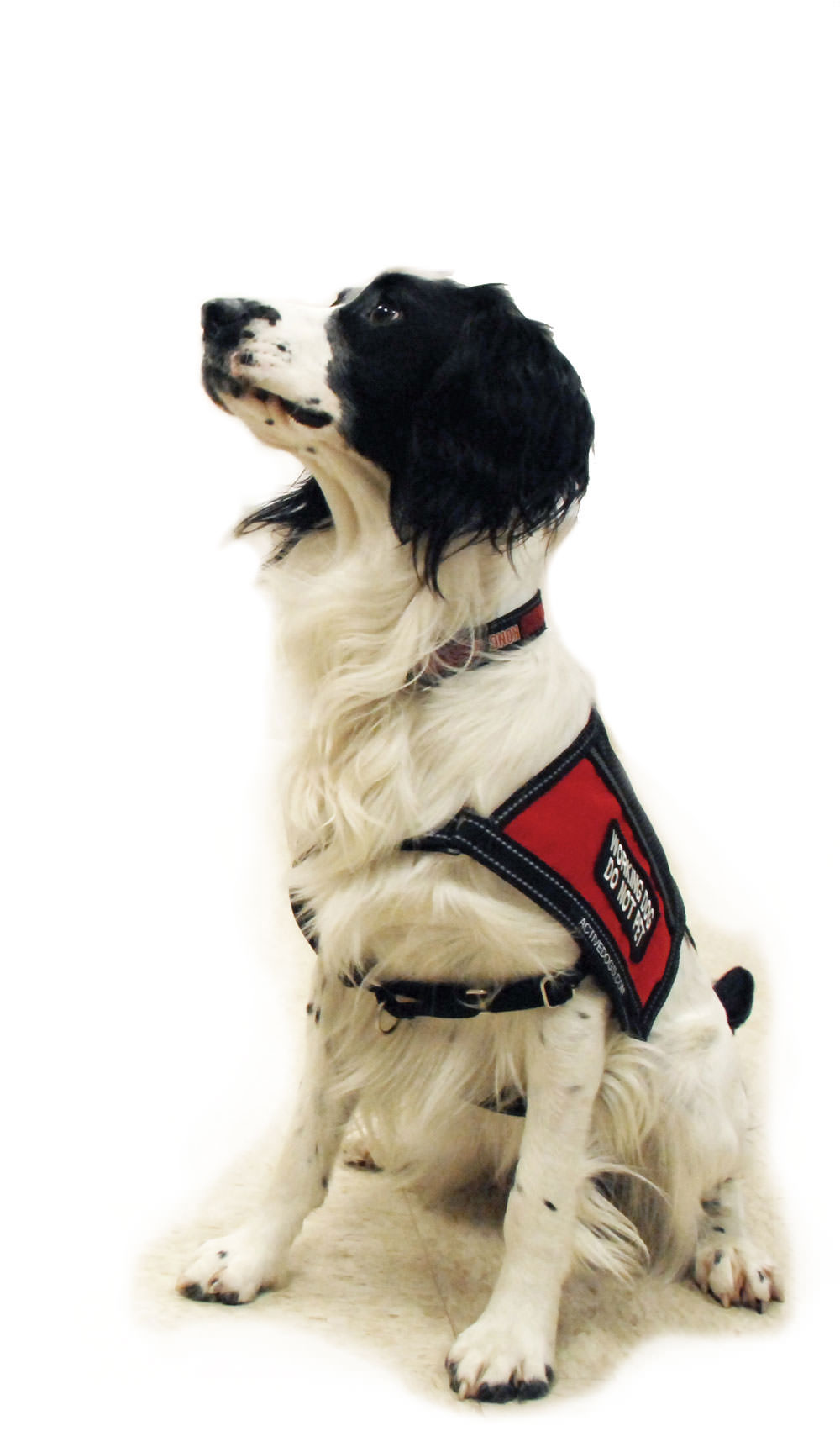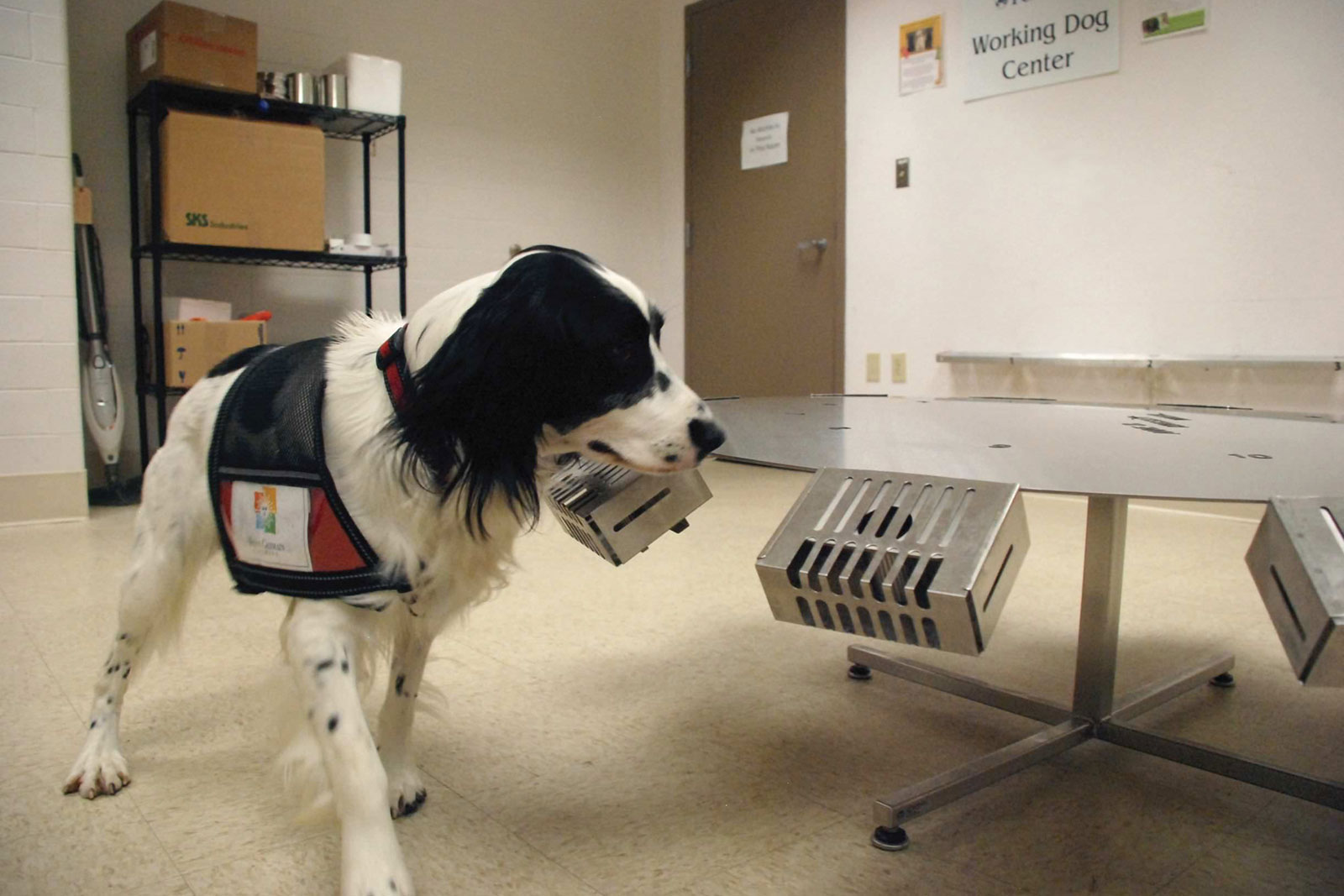To call a dog man’s best friend would be something of an understatement. In the last two decades alone, the role of the dog has expanded significantly in the public consciousness to such identities as “comfort animal” and “Instagram influencer.” However, if researchers at the University of Pennsylvania’s Working Dog Center and other medical facilities around the world have their say in the matter, dogs may take on their most significant and impactful role yet: cancer fighters.
A dog’s superior sense of smell has long been used in the human world, whether to aid in searches for police investigations or to detect stolen antiquities from developing countries. Now, canine olfaction has gained increased recognition in the medical research field as a viable tool for detection of disease.
 Canine olfaction in the medical field is not a new concept. Diabetes alert dogs receive training to detect hyperglycemic and hypoglycemic levels of blood sugar in humans, alerting their owners so they may take the necessary steps to return their blood glucose levels to normal. Dogs have also been used in biofilm screenings to detect early-stage infections and for such conditions as Addison’s disease and epilepsy.
Canine olfaction in the medical field is not a new concept. Diabetes alert dogs receive training to detect hyperglycemic and hypoglycemic levels of blood sugar in humans, alerting their owners so they may take the necessary steps to return their blood glucose levels to normal. Dogs have also been used in biofilm screenings to detect early-stage infections and for such conditions as Addison’s disease and epilepsy.
But canine olfaction in the cancer research and development field provides new opportunities to offer noninvasive and early-stage detection for some of the deadliest cancers, such as ovarian, lung, and prostate cancer. Researchers at the Working Dog Center made significant breakthroughs in the summer of 2018 by training their cohort of dogs to alert detection of the ovarian cancer odor signature. Ovarian cancer is typically found in advanced stages when prognosis is much worse for patients, since there is currently no early-detection screening for ovarian cancer. However, the Working Dog Center’s trained pooches were able to detect ovarian cancer in stage I and II, providing hope for a noninvasive screening method in the future.
Working with the Monell Chemical Senses Center, researchers used gas chromatography to single out the odor signature of ovarian cancer using blood plasma samples. According to Jennifer Essler, a postdoctoral fellow at the Working Dog Center, it was much more difficult for the dogs to detect the ovarian cancer odor signature, because the odor was much fainter than what dogs are typically asked to detect.
During the study’s initial phases, the dogs trained using 75 microliters of the blood plasma. Researchers eventually were able to train the dogs for odor detection using 50 microliters by utilizing a diluted blood plasma solution that was two-parts blood plasma and one-part saline. “Getting them down to this level of the diluted blood plasma allowed them to recognize the odors from the chemistry side of it,” says Essler. Next, the researchers hope to distinguish which specific parts of the blood plasma dogs can identify. “What is the odor of this malignant blood plasma that tells them it’s cancer in the blood plasma and not benign tumors?” asks Essler.
However, the Working Dog Center's trained pooches were able to detect ovarian cancer in stage I and II, providing hope for a noninvasive screening method in the future.
Although the idea of canine olfaction may generate visions of sweet, fluffy dogs set loose in hospitals and medical clinics, the Working Dog Center researchers have a different plan in mind. “We’re not looking for dogs to [work] in hospitals to detect on people,” Essler says. “Our long-term end goal is to have an electronic nose.” This electronic nose, Essler says, would scan blood plasmas in much the same way as canine olfaction. The Working Dog Center is working with a research lab at the University of Pennsylvania to manufacture an electronic nose using their training research. “Our big thing is turning [the electronic nose] into a general screening type of thing for this type of cancer and other types of cancer during those earlier stages when the prognosis is better,” says Essler.
For the time being, many steps—including manufacturing, clinical trial testing, and FDA approval—stand in the way of the university’s electronic nose making its way to the public. However, the Working Dog Center’s recent breakthroughs prove the idea is not as far-fetched as it may seem on the surface. Once the electronic nose becomes a reality, Essler envisions utilizing it not just for ovarian cancer, but for a variety of cancer types. “In the end, the impact would be quite big,” Essler says.







